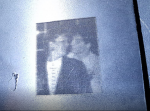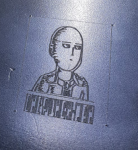- Joined
- Feb 8, 2013
- Messages
- 89
- Points
- 8
hey guys. quik question here.
i am building a laser engraver and it's basicly my first time playing around with home made lasers.
and i have a question
tldr.
i made my own laser driver. and when i adjust the current i see a weird effect and i don't know what it means.
also i think i may have wired up my potentiometer in reverse. (turning it all the way clockwise dims the laser) but i tested it before with an led. and then clockwise was brighter and counterclockwise was dimmer.
so the questions are.
what is this weird effect.
and why does it dim when it supposed to be at full power. (note this driver can supply between 125 and 400 mA. the laser diode is in the range of 200-300mA)
this is the driver that i made

on a side note. the effect is when adjusting the current. (so it changes to a set shape for a set current) if i stop adjusting it will stay in whatever way it is at that time.. i have the feeling it's from overdriving the diode and doing so for a long time could destroy it?
(i know i sound like a noob. but i assure you. a noob is far more knowledgeable then me when it comes to how lasers work, i'm just a quik learner and good with google)
thing is. i don't know wich.
is the dimming an effect of overdriving? (in wich case the potentiometer or driver as a whole is working perfectly and as intended)
or is the flickering (changing of the form of the dot) the sign of overdriving. (in wich case the potentiometer is wired up in reverse polarity)
i am building a laser engraver and it's basicly my first time playing around with home made lasers.
and i have a question
tldr.
i made my own laser driver. and when i adjust the current i see a weird effect and i don't know what it means.
also i think i may have wired up my potentiometer in reverse. (turning it all the way clockwise dims the laser) but i tested it before with an led. and then clockwise was brighter and counterclockwise was dimmer.
so the questions are.
what is this weird effect.
and why does it dim when it supposed to be at full power. (note this driver can supply between 125 and 400 mA. the laser diode is in the range of 200-300mA)
this is the driver that i made

on a side note. the effect is when adjusting the current. (so it changes to a set shape for a set current) if i stop adjusting it will stay in whatever way it is at that time.. i have the feeling it's from overdriving the diode and doing so for a long time could destroy it?
(i know i sound like a noob. but i assure you. a noob is far more knowledgeable then me when it comes to how lasers work, i'm just a quik learner and good with google)
thing is. i don't know wich.
is the dimming an effect of overdriving? (in wich case the potentiometer or driver as a whole is working perfectly and as intended)
or is the flickering (changing of the form of the dot) the sign of overdriving. (in wich case the potentiometer is wired up in reverse polarity)
Last edited:






